Holdout heroes: property owners who defied developers
The most stubbornly resolute property owners of all time

Courtesy of the Institute for Justice (www.ij.org) ; Jack E. Boucher / Library of Congress
Like Carl the cantankerous widower in the Disney Pixar movie Up, we're telling the stories of the most stubborn real estate owners of all time. They resisted every attempt by powerful developers to drive them out, steadfastly staying put while neighbouring properties were razed to the ground proving that, sometimes, the little guy wins.
Read on to discover real estate holdouts who defied developers against all the odds...
Siegel-Cooper vs. Macy's Department Store
![<p>Irving Underhill / Wikimedia Commons [Public domain]</p>](https://s.yimg.com/ny/api/res/1.2/XiqEXpBak5XwKWmQgU_Itg--/YXBwaWQ9aGlnaGxhbmRlcjt3PTk2MDtoPTYxOQ--/https://media.zenfs.com/en/loveproperty_uk_165/8b0ac714e53e13553beba51b8a47ec4a)
Irving Underhill / Wikimedia Commons [Public domain]
To fulfil its ambition to become the largest department store on the planet, Macy's was forced to build around a five-storey structure on Manhattan's Herald Square.
After discovering Macy's was buying up the entire block, rival retailer Siegal-Cooper acquired a plot on the corner of Broadway and 34th Street in 1900 and erected the five-floor building on the site in 1903 to thwart the plans.
Siegel-Cooper vs. Macy's Department Store
![<p>Ajay Suresh / Wikimedia Commons [CC BY 2.0]</p>](https://s.yimg.com/ny/api/res/1.2/EAf1Gq8TyzNN3ZeLzCjEvQ--/YXBwaWQ9aGlnaGxhbmRlcjt3PTk2MDtoPTYxOQ--/https://media.zenfs.com/en/loveproperty_uk_165/8b6839cee637d7fcb23851082269c963)
Ajay Suresh / Wikimedia Commons [CC BY 2.0]
Siegal-Cooper had constructed the world's biggest department store on Sixth Avenue in 1896 and was prepared to play dirty to keep the coveted title. Siegal-Cooper was also trying to force Macy's to relinquish its Sixth Avenue and 14th Street locations in exchange for the building.
Macy's ignored the ploy and the building was sold in 1911 for a record million dollars, but not to Macy's. The spot has since been dubbed the 'Million Dollar Corner' and Macy's simply built around the structure...
Siegel-Cooper vs. Macy's Department Store
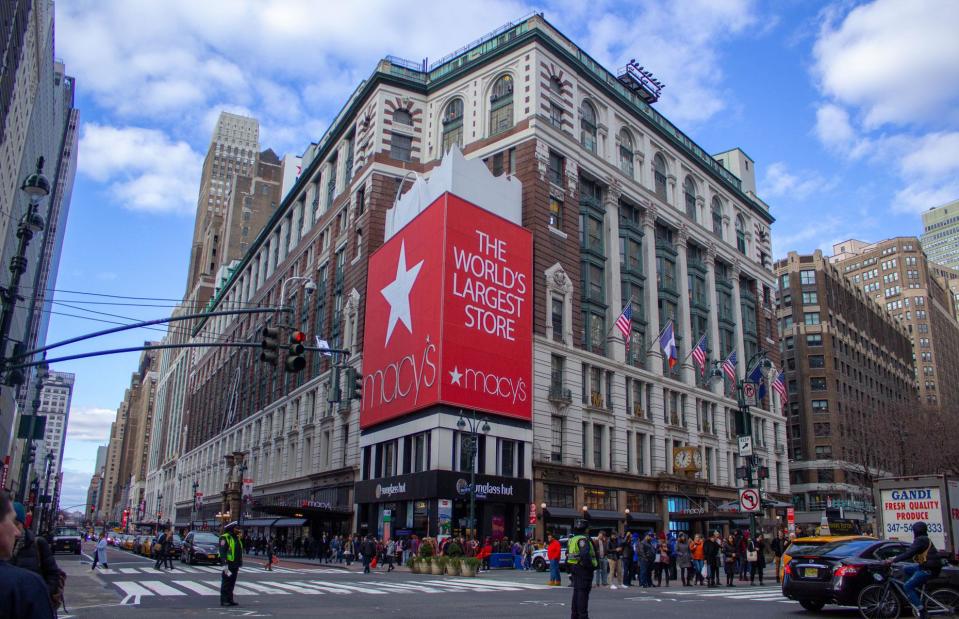
PandaL / Shutterstock
Macy's was finally declared the world's largest department store in 1925, outclassing its competitors. The building has since been redeveloped but Macy's has never managed to buy it.
Instead, since 1945 the retailer has leased advertising space on the corner structure, which today is partly covered by the famous Macy's shopping bag hoarding. The building currently houses a Sunglass Hut store.
Mary Cook vs. Manhattan apartment developers
![<p>NYPL Collection [Public domain]</p>](https://s.yimg.com/ny/api/res/1.2/Yzo6zgEzi1SzUekTvOBhww--/YXBwaWQ9aGlnaGxhbmRlcjt3PTk2MDtoPTYxOQ--/https://media.zenfs.com/en/loveproperty_uk_165/090058dec0075976a379bc12ae32c0a9)
NYPL Collection [Public domain]
Staying in the Big Apple, this handsome building incorporated five elegant townhouses built on West End Avenue in 1893. Designed by esteemed architect Clarence Fagan True, the building resembled a single grand Gilded Age mansion.
The house at number 249 was owned by the Cook family who moved in sometime during the late 1890s.
Mary Cook vs. Manhattan apartment developers
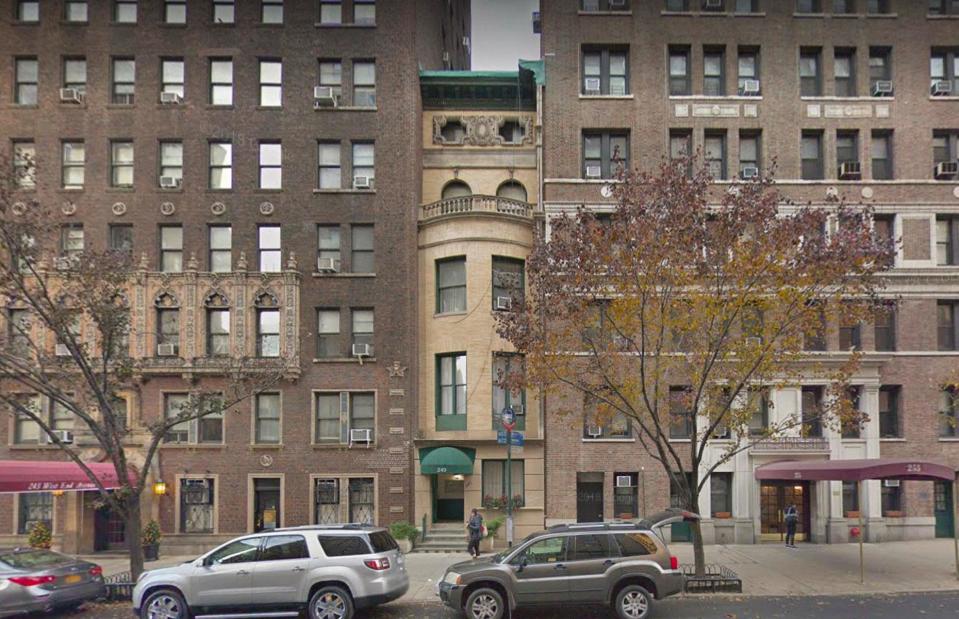
Google Maps
By 1915 only Mary Cook, the matriarch of the family, remained. Cook's husband had died tragically in 1913 and her children had flown the nest. A slew of developers descended on the area and persuaded Cook's neighbours to sell up, but the widow refused to budge.
Eventually, the attractive original building was partly demolished to make way for two lofty apartment blocks.
Mary Cook vs. Manhattan apartment developers
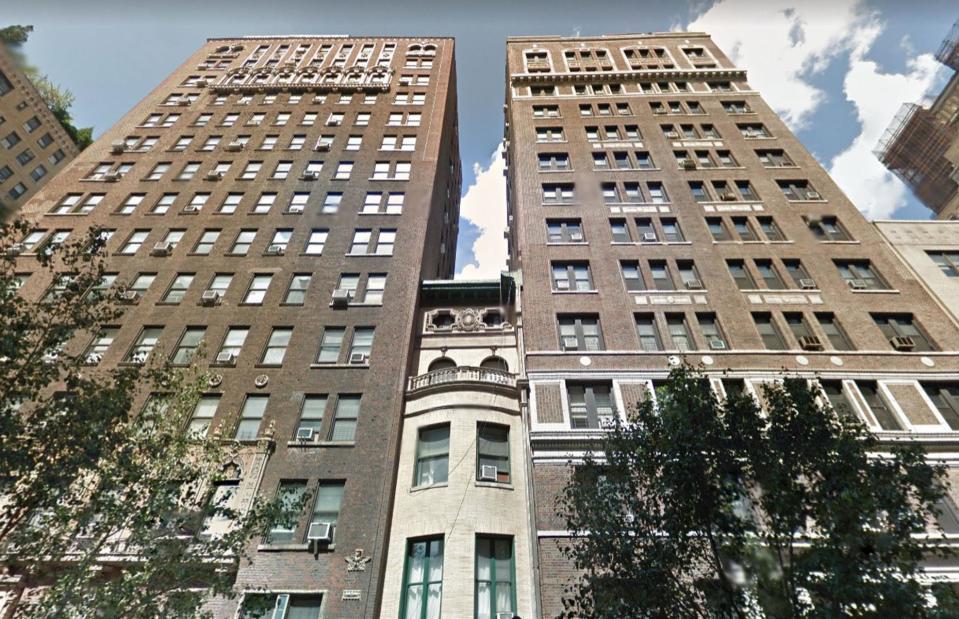
Google Maps
Cook's house, however, was left untouched, squeezed snugly between the pair of condominium buildings. The strong-willed widow died in 1932.
The house, which has escaped the wrecking ball to this day, was sold and converted into an art gallery before being split into several apartments.
Edith Macefield vs. Ballard Blocks developers
![<p>Ben Tesch / Wikimedia Commons [CC BY 2.0]</p>](https://s.yimg.com/ny/api/res/1.2/T78XqrFYoKqZsWZOSxjB1g--/YXBwaWQ9aGlnaGxhbmRlcjt3PTk2MDtoPTYxOQ--/https://media.zenfs.com/en/loveproperty_uk_165/c56d095d2923a29b6f6acdc6bf4240b5)
Ben Tesch / Wikimedia Commons [CC BY 2.0]
Back in 2006 octogenarian Seattle resident Edith Macefield garnered folk hero status when she turned down a million-dollar offer from developers for her dinky house in the now-hip Ballard neighbourhood, which was rapidly undergoing gentrification.
Edith Macefield vs. Ballard Blocks developers
![<p>Visitor7 / Wikimedia Commons [CC BY-SA 3.0]</p>](https://s.yimg.com/ny/api/res/1.2/b_dQVOon3kGt_ItvSFjtww--/YXBwaWQ9aGlnaGxhbmRlcjt3PTk2MDtoPTYxOQ--/https://media.zenfs.com/en/loveproperty_uk_165/8fe63e37deb4ebe1ec8dce341dc160df)
Visitor7 / Wikimedia Commons [CC BY-SA 3.0]
Macefield's house was valued at $8,000 by "government assessors" – that's about $12,400 (£9.9k) in today's money – though the land was worth $101,000 ($155k/£123k today), making her holdout all the more surprising.
“I don't care about money,” she told The Seattle Times. “I'm 84. I'm perfectly happy here. And I don't want to move.”
The powers that be ultimately gave up trying to persuade the elderly lady to sell and built the development around her modest home.
Edith Macefield vs. Ballard Blocks developers
![<p>Sean_Marshall / Flickr [CC BY 2.0]</p>](https://s.yimg.com/ny/api/res/1.2/0n9loo0vchq6jUadL1ze7Q--/YXBwaWQ9aGlnaGxhbmRlcjt3PTk2MDtoPTYxOQ--/https://media.zenfs.com/en/loveproperty_uk_165/9c24228c5f13d1e78bd30f7ae29cb5c1)
Sean_Marshall / Flickr [CC BY 2.0]
Macefield died in 2008. Interestingly, the property was bequeathed to Barry Martin, the new building's construction manager with whom she had struck up a friendship. Not long after her passing, Martin sold the house for $304,000 (£241k) and despite rumours that the property has been earmarked for demolition, it still stands, a testament to its late owner's resilience.
A group linked to Ballard Blocks finally took ownership of the tiny home in 2015 and they've stated their intention to keep the house and integrate it into the wider development, Curbed reported in 2018. However, according to map images taken in 2023, the house still stands empty.
Wu Ping and Yang Wu vs. Chongqing shopping mall developers

China Photos / Getty Images
During the 2000s, real estate holdouts in China became a new phenomenon as shiny new developments sprang up around the country. The properties residents refused to part with were dubbed 'nail houses' because they stick out and snag the plans of developers.
The home of Wu Ping (pictured) and her husband Yang Wu in Chongqing is one of the most famous. In 2004 the Wus were approached by developers who wanted to raze the property to build a shopping mall. Unimpressed by the derisory compensation offer, the couple refused to move even after their neighbours had been bought out.
Wu Ping and Yang Wu vs. Chongqing shopping mall developers

STR / AFP / Getty Images
Eventually, their home stood on a raised mound in the middle of a construction site and the developers shut off the power and water. But even then, Yang cut a makeshift stairway up from the 10-meter pit that surrounded the house and hung a Chinese flag from its roof.
He guarded the home while Wu conducted press conferences and sent him food, water, and quilts using a rope and pulleys.
Wu Ping and Yang Wu vs. Chongqing shopping mall developers

China Photos / Getty Images
In March 2007 a court order was issued to remove the couple who courted the media and became a cause célèbre (a term given to a controversial case that gets a lot of public and media attention). Yet the pair ignored it and stood their ground.
Thanks to their stubbornness, the Wus bagged a new apartment of the same size and finally called it a day on their three-year fight the following month. And the case went down in history.
Randal Acker vs. TriMet
![<p>Visitor7 / Wikimedia Commons [CC BY-SA 3.0]</p>](https://s.yimg.com/ny/api/res/1.2/YI_ZY.eLzydA66CAP3UkNw--/YXBwaWQ9aGlnaGxhbmRlcjt3PTk2MDtoPTYxOQ--/https://media.zenfs.com/en/loveproperty_uk_165/20600295be6265bc8830a50c02dfa794)
Visitor7 / Wikimedia Commons [CC BY-SA 3.0]
In 2005, lawyer Randal Acker purchased a charming Queen Anne house in downtown Portland for $380,000 (about $604k/£478k today) and christened the property the Figo House after his dog.
The house served as the attorney's office. Yet a year after he bought it, Acker's property was facing the bulldozers.
Randal Acker vs. TriMet
![<p>Visitor7 / Wikimedia Commons [CC BY-SA 3.0]</p>](https://s.yimg.com/ny/api/res/1.2/Tqcp224GZZmDUb67MlaryQ--/YXBwaWQ9aGlnaGxhbmRlcjt3PTk2MDtoPTYxOQ--/https://media.zenfs.com/en/loveproperty_uk_165/6bb72e927cbf981d11344072e57c98ec)
Visitor7 / Wikimedia Commons [CC BY-SA 3.0]
Local transit authority TriMet was busily buying up surrounding properties to make way for student accommodation and asked Acker to sell up. He refused and the authority responded by threatening to place the house under eminent domain, which is the right of the state to take private property without the property owner's consent.
The Fifth Amendment to the US Constitution requires 'just compensation' to be given to the property owner when private property is taken by the federal government. Luckily, Acker's knowledge of the law came to the rescue and TriMet backed down in 2008.
Randal Acker vs. TriMet
![<p>Visitor7 / Wikimedia Commons [CC BY-SA 3.0]</p>](https://s.yimg.com/ny/api/res/1.2/aLqmDYjBz5gsOg3r1AV.MQ--/YXBwaWQ9aGlnaGxhbmRlcjt3PTk2MDtoPTYxOQ--/https://media.zenfs.com/en/loveproperty_uk_165/db3c8db9202aa888511f8c41cbfc6b1e)
Visitor7 / Wikimedia Commons [CC BY-SA 3.0]
The student residence halls project went ahead and was constructed around the historic house. Enjoying the last laugh, Acker celebrated his triumph in 2011 by buying 400 helium balloons, which were tied to the chimney of the house, a homage to the movie Up.
As of 2024, the charming building remains the office of Acker + Associates P.C.
Yang Youde vs. Wuhan City developers

STR / AFP / Getty Images
Farmer Yang Youde was feted as a hero in 2010 when he battled with developers in the Chinese city of Wuhan who wanted to acquire his 4.3 acres of land at a knockdown price. Yang was having none of it and turned to extreme measures to fight off the speculators.
Yang Youde vs. Wuhan City developers

STR / AFP / Getty Images
The headstrong farmer, who was clearly prepared to go all out, constructed a makeshift watchtower and cobbled together an armoury of flame-throwing bamboo bazookas to repel the developers, earning him the moniker 'Rocket Man'.
Yang Youde vs. Wuhan City developers

STR / AFP / Getty Images
Yang claimed to have used his homemade weapons on just one occasion to warn off the speculators. Amazingly, his violent methods worked on the developers but his brother was attacked and injured in the process.
Later that year, the farmer won a generous compensation deal worth more than 750,000 yuan (£75k/ $93.4k) for 4.32 acres of land, a fishpond and his single-storey brick farmhouse and agreed to hand over his land once and for all according to The Guardian.
Apartment block residents vs. the Government of Guangzhou

STR / AFP / Getty Images
Back to China's famous nail houses. This apartment block and home in the city of Guangzhou make for an odd sight given they are encircled by an overpass.
Before the highway's construction in 2008, the local authorities tried and failed to remove three families residing in the buildings.
Apartment block residents vs. the Government of Guangzhou

Imaginechina Limited / Alamy Stock Photo
The three families were far from impressed with the compensation offered by the government and turned it down. Unable to move the residents, the authorities simply constructed the overpass around the buildings.
Apartment block residents vs. the Government of Guangzhou

STR / AFP / Getty Images
The local government reportedly promised the residents that it would build a sound barrier around their homes but the pledge doesn't appear to have been honoured.
Whether the homeowners and their families can put up with the noise and pollution long-term remains to be seen but recent satellite map images show the properties are still standing.
Luo Baogen vs. the Government of Wenling

STR / AFP / Getty Images
Luo Baogen had scrimped and saved 600,000 yuan the equivalent of almost $95,000 (£76k) to build his home in Wenling, China. So, when the government first approached him in 2008, wanting to demolish it to construct a highway, the hard-working duck farmer was understandably up in arms.
The first standard offer of 220,000 yuan ($35k / £28k) to move out was refused by Baogen and according to CBS News was then raised to 260,000 yuan ($41k / £33k), but he stayed put.
Luo Baogen vs. the Government of Wenling

STR / AFP / Getty Images
Luo rejected both offers in no uncertain terms and the government built the highway around his home. In the meantime, the plucky poultry farmer and his wife fought the authorities for a decent payout, a battle that went on for four years.
Luo Baogen vs. the Government of Wenling

STR / AFP / Getty Images
Weary from his arduous fight, Luo finally accepted $42,000 (£34k) for the property, which though considerably less than what he spent to erect it, was a marked improvement on the initial offer.
The house was finally demolished in 2012 and Luo's case, which by this point had gone viral around the world, was closed.
Vera Coking vs. Bob Guccione and Donald Trump
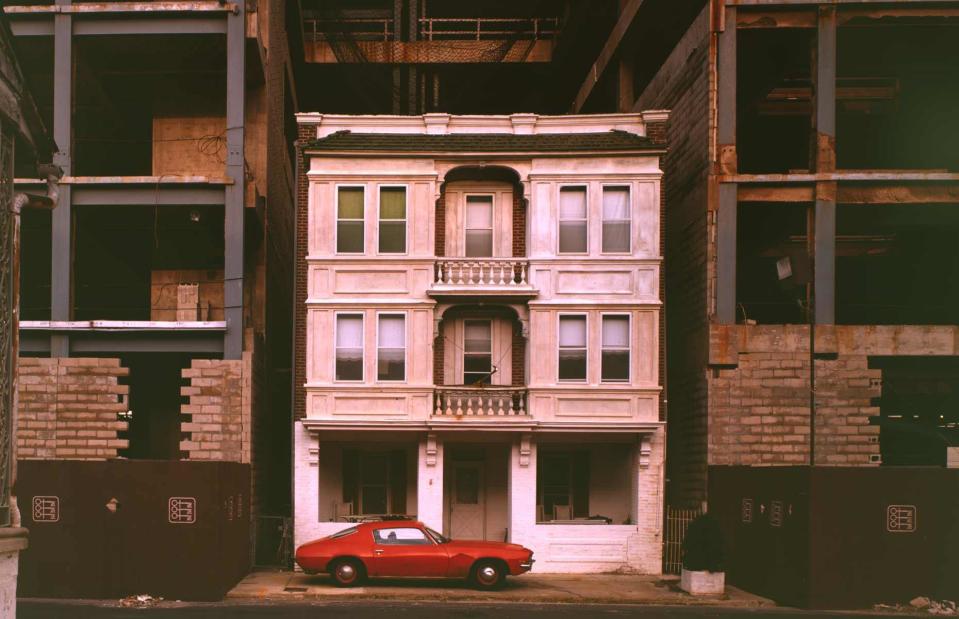
Jack E. Boucher / Library of Congress
The prospect of single-handedly taking on the world's biggest developers seems daunting to most. But not so for Vera Coking, a retiree from New Jersey. Coking and her husband bought their three-storey clapboard house in Atlantic City in 1961 for $20,000 (around $207k/£164k today). Then the casino developers came knocking.
In the early 1980s, Coking rejected a million-dollar offer from Penthouse founder Bob Guccione, who was embarking on a large commercial development in the city. Seemingly not taking no for an answer, the magazine boss began building the Penthouse Boardwalk Hotel and Casino around her house. However, building work halted when Guccione couldn't obtain a gaming license and the project went bust, according to Philadelphia Magazine.
Vera Coking vs. Bob Guccione and Donald Trump
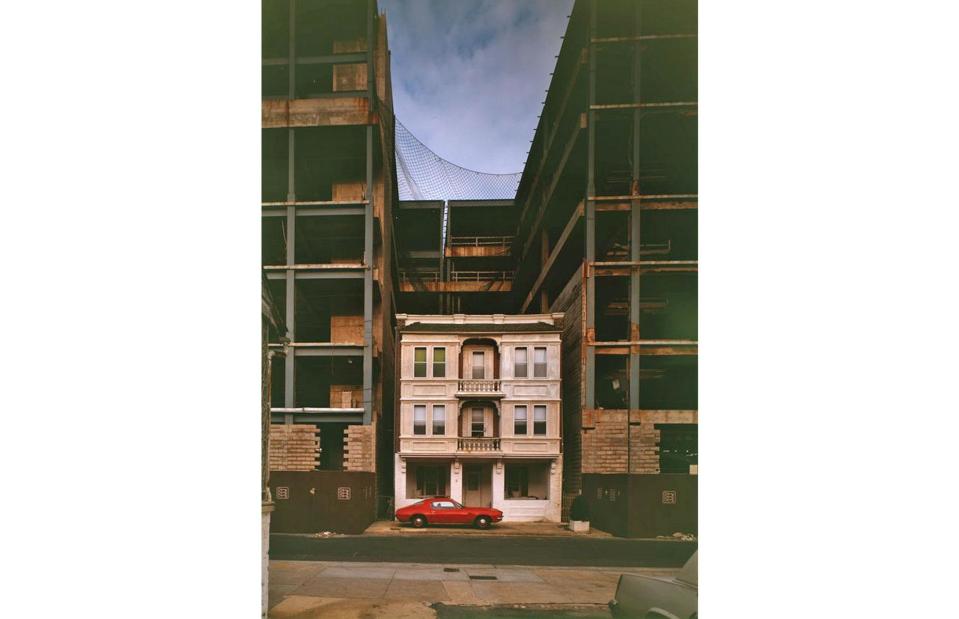
Jack E. Boucher / Library of Congress
A decade later Donald Trump stepped in and bought up the surrounding land for his Trump Plaza Hotel and Casino. He turned his attention to sweetening up Coking, whose husband had sadly passed away in the intervening years.
Coking stood her ground even when things turned nasty. Demolition crews allegedly damaged the property and set fire to its roof according to her attorneys, quoted in The Washington Post. Trump petitioned the City to use the power of 'eminent domain' to condemn the property. The widow was unwavering during the legal battle and in 1998, New Jersey's Supreme Court ruled that Coking's house could not be taken away from her.
Vera Coking vs. Bob Guccione and Donald Trump

Courtesy of the Institute for Justice (www.ij.org)
Coking (pictured) stayed at her beloved clapboard house until 2010 when she moved to a retirement community in California near her family. The home was placed up for sale with the dizzying price tag of $5 million (£4m), but it was unable to find a buyer.
It eventually sold at auction in 2014 to investor Carl Icahn for $583,000 (£461k) and the home was promptly demolished.
Salah Oudjane vs. SEM Ville Renewale
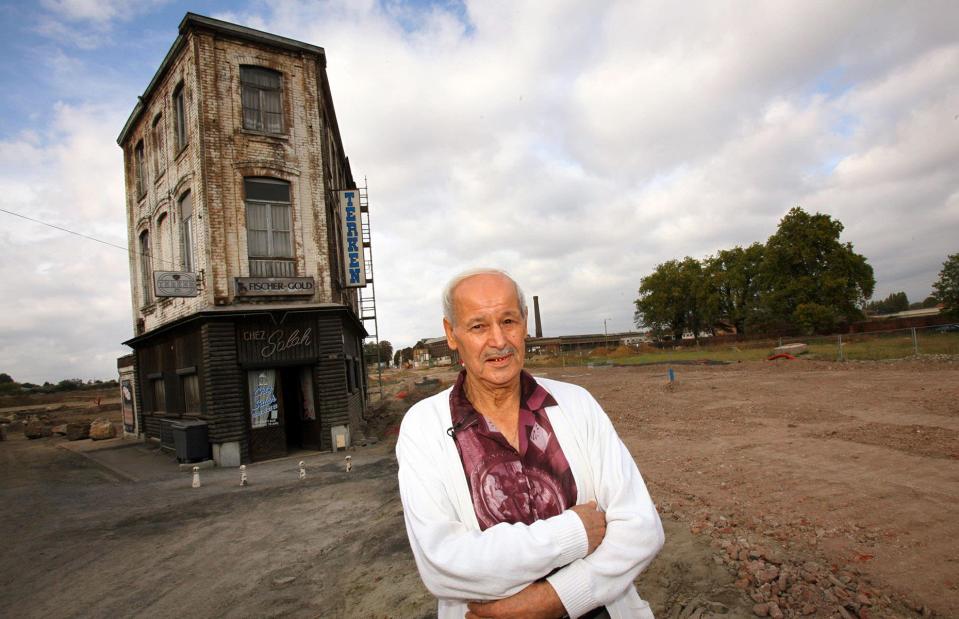
Abaca Press / Alamy Stock Photo
In 2011, Salah Oudjane (then aged 71) became something of a national hero in France. Oudjane, originally from Algeria, had bought a café in the old Union neighbourhood of Roubaix, northern France in 1965.
Named Chez Salah after its owner, the little bistro was a favourite among local workers, but as the surrounding factories closed and times changed, new plans were made for the old area – and they didn't include Chez Salah...
Salah Oudjane vs. SEM Ville Renewale
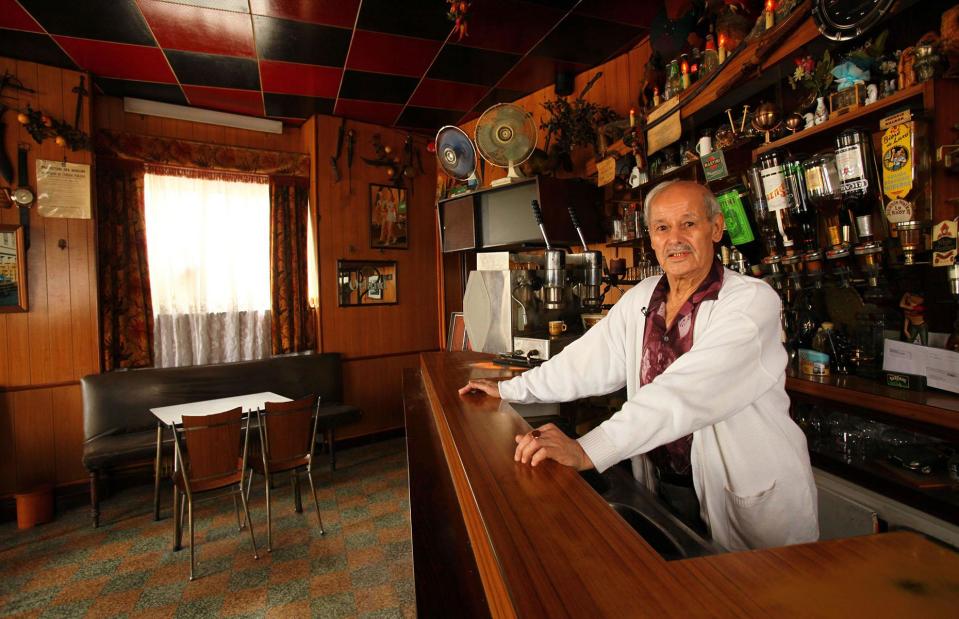
Abaca Press / Alamy Stock Photo
Ripe for renewal, SEM Ville Renewale embarked on plans to turn the old neighbourhood into an 'eco-district'. By 2011, bulldozers had razed the area, destroying everything except Chez Salah.
For over 15 years, Oudjane had refused buy-out offers for his beloved café, which had also been his home – and that of his late wife – for 46 years. "I wasn't even waiting to be told the amount," he told Le Point. "There is no question of leaving. This is where I spent my youth, this is my life."
Salah Oudjane vs. SEM Ville Renewale
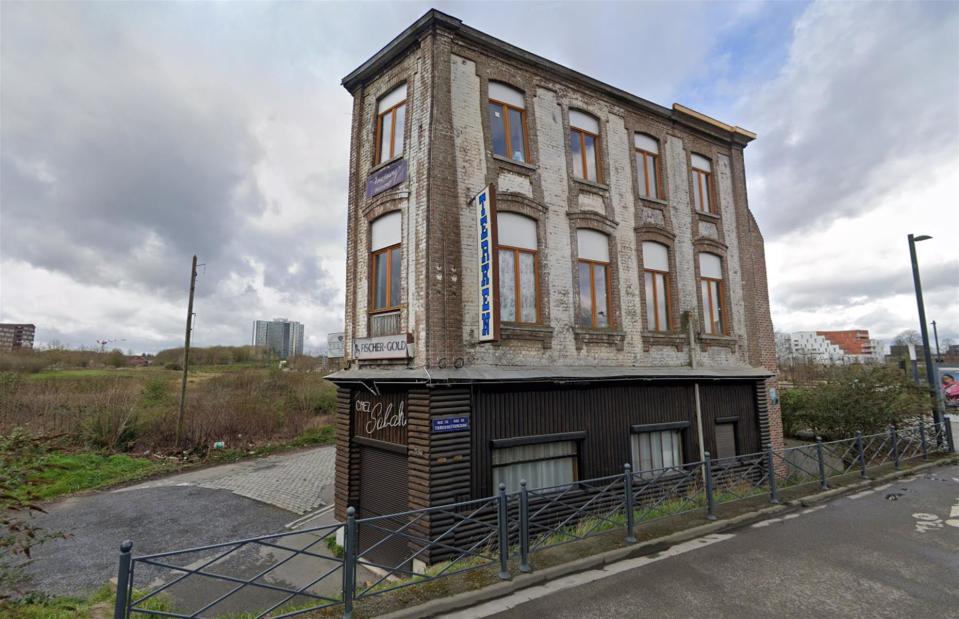
Google Maps
Stubbornly resisting the pressure to sell, Salah Oudjane won his battle and in 2016 it was decided that the building would be preserved as a testament to the area's industrial history and to maintain the "dynamics of the district", according to La Voix Du Nord.
Oudjane continued to run the café until 2018 when it closed its doors for the last time. He died in 2019 and his act of defiance against the steamroller of urban renewal was widely celebrated in the French press.
Despite Oudjane's death, SEM Ville Renewale declared they would adapt according to the wishes of his son and daughter. As of March 2023, the little bistro was still standing.
Norm and Janet Richards vs. South Brisbane developers
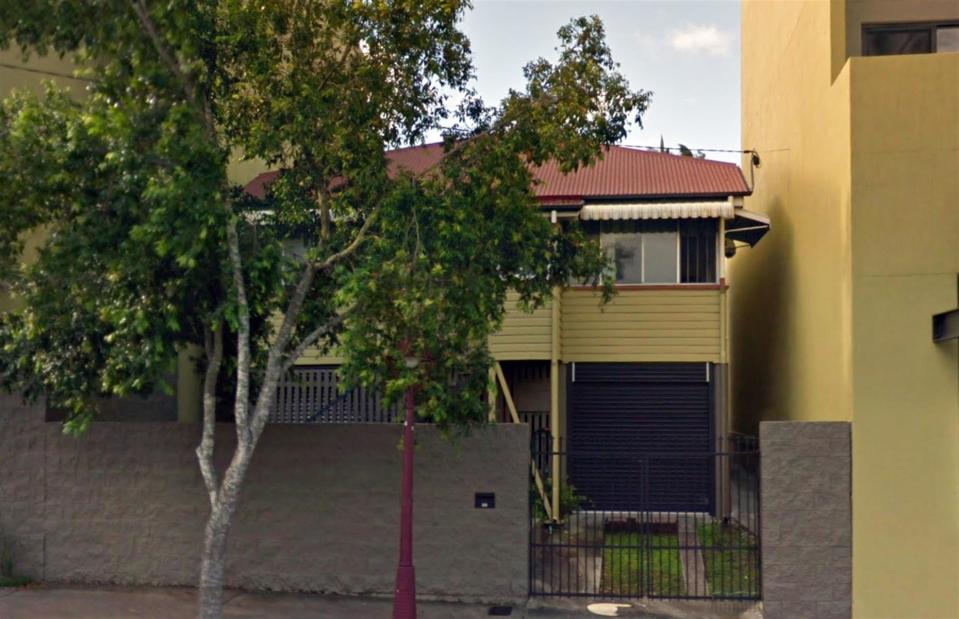
Google Maps
This tiny cottage in South Brisbane, Australia is a tiny slice of Queensland history. The home was owned for over 60 years by Norm and Janet Richards and had been bought by Norm's parents in the late 1800s.
Back then the suburb was "all mud huts – little cottages with mud floors," Janet told 9 News in 2015. However, as times changed, the area was targeted by developers and the distinctive house came under threat...
Norm and Janet Richards vs. South Brisbane developers
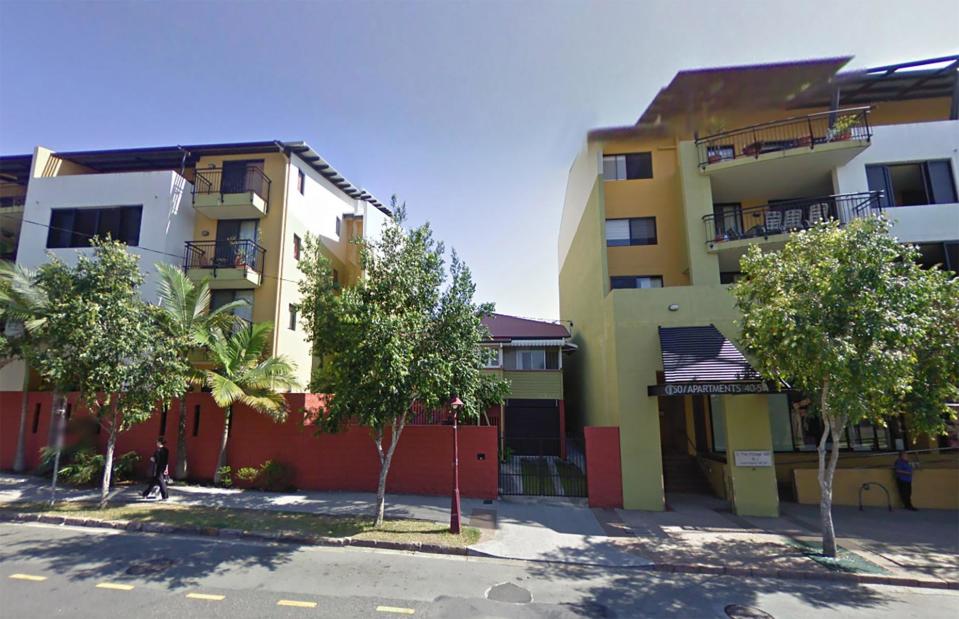
Google Maps
Gradually, the surrounding homes were demolished, making way for multi-storey apartment buildings but Norm and Janet stood firm and refused the developers' offers to buy their house.
The surrounding buildings grew to tower over the single remaining cottage, but the couple didn't mind. “There’s no intrusion," Janet insisted. "It’s all lovely and quiet, we have no trouble with noise."
Norm and Janet Richards vs. South Brisbane developers
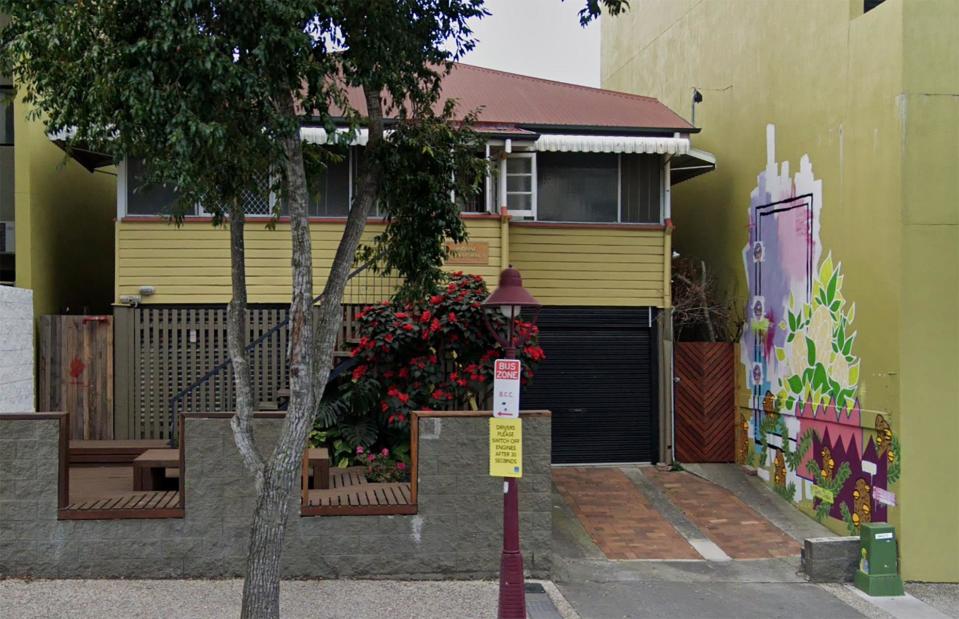
Google Maps
Janet eventually sold her home in November 2015, after her husband passed away. It was bought for AUD$1.4 million ($911k/£725k) by a so-called "community developer" who wanted the building to be useful to the neighbourhood residents.
Today, the historic green cottage houses a local arts centre, which provides residencies and low-cost studio space for burgeoning artists – we can't help but think that Norm and Janet would approve.
Carl Wilkens and Mary Ackert vs. commercial developers
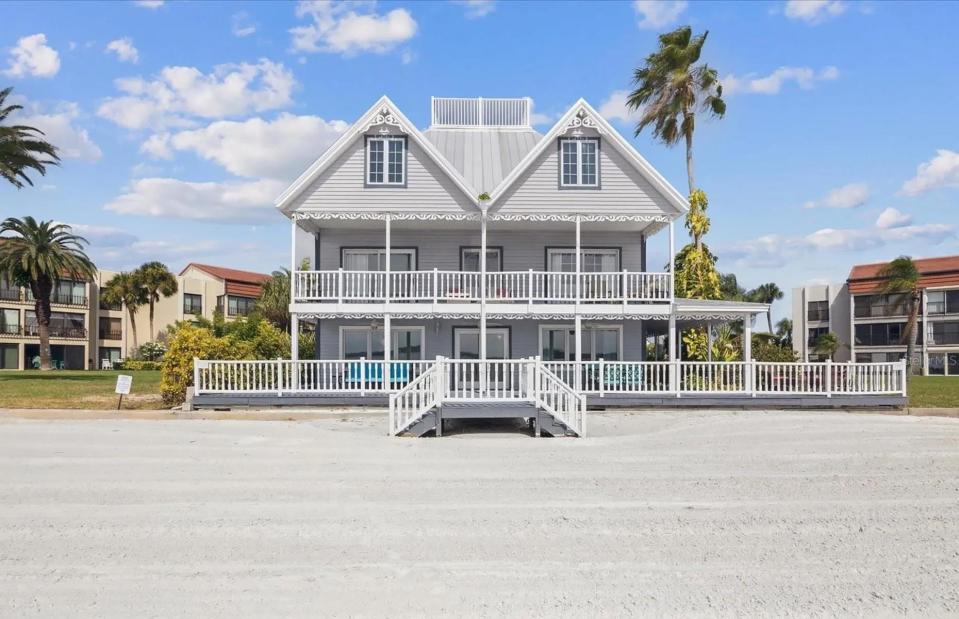
Engel & Völkers Belleair
Florida's most famous 'holdout house' stands on a pristine stretch of Clearwater Beach in the Gulf of Mexico, about 16 miles from Tampa.
It's easy to see why the owner of this dreamy four-bedroom beach house wanted to hang onto it – and why developers were so keen to snap it up...
Carl Wilkens and Mary Ackert vs. commercial developers
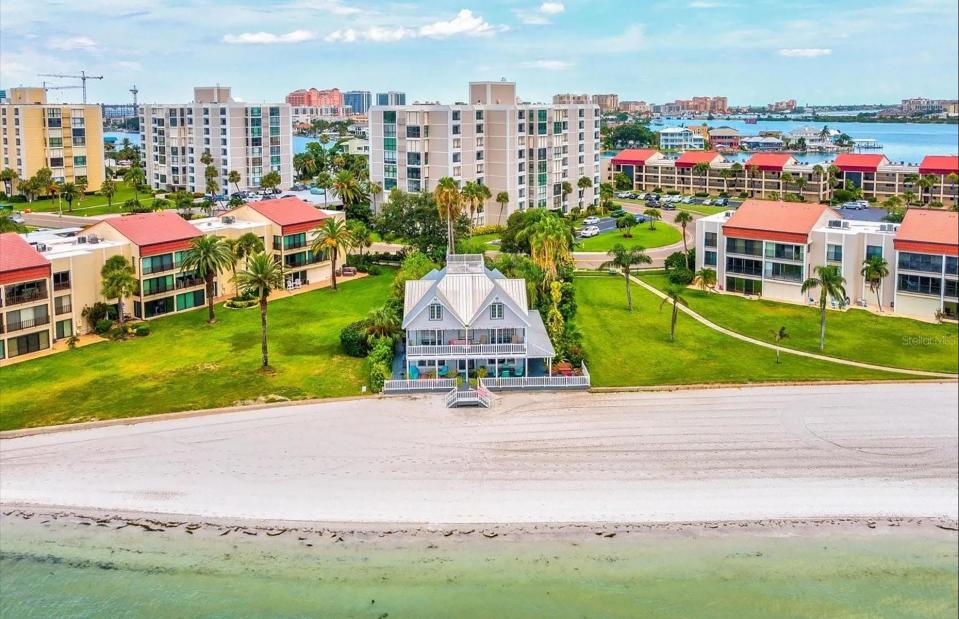
Engel & Völkers Belleair
Carl Wilkens and his wife Mary Akert built the Victorian-style home in 1963 but, as Florida became America's vacation spot of choice, they soon came under pressure to sell up so developers could tear down the house and build vacation condos in its place.
The offers were generous, according to Realtor.com, but the couple refused to sell, even when construction workers "'accidentally' cut the power lines" and "a bulldozer 'accidentally' broke the water main that supplied her drinking water," according to Creative Loafing Tampa. Eventually, Carl and Mary's home became the last surviving single-family home on the waterfront.
Carl Wilkens and Mary Ackert vs. commercial developers
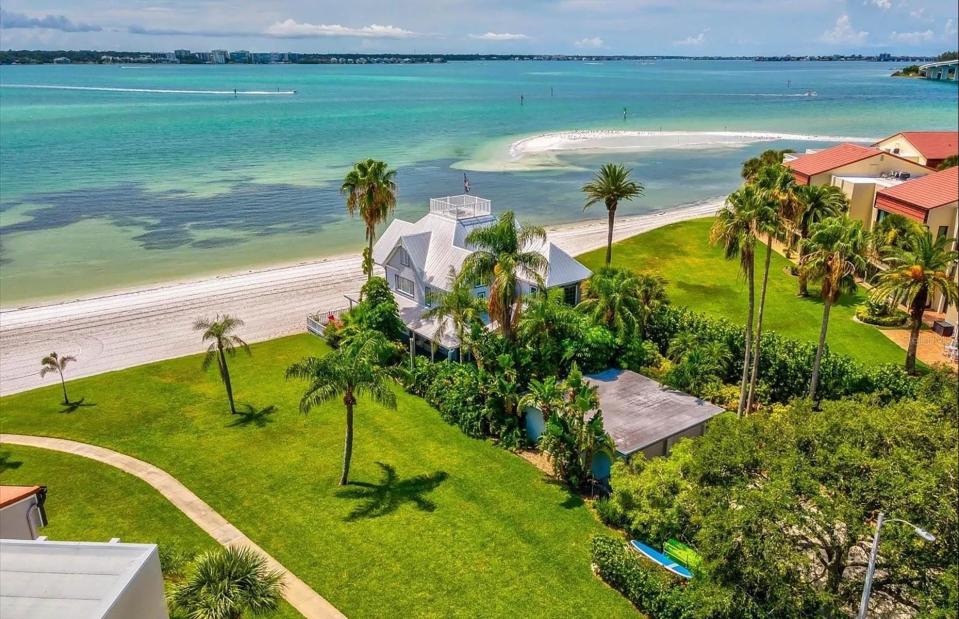
Engel & Völkers Belleair
In 1979, Mary finally sold the beautiful building to local news anchor Joe Mannion, who promised her he wouldn't sell it. Joe was true to his word and he and his wife lived there until they passed away.
The Mannions' estate listed the home in September 2023 for almost $7 million (£5.6m) before dropping the price to $4.8 million (£3.8m) in March 2024. Fingers crossed, the next family to move in can resist the developers and enjoy the home's white sandy beach and sea views.
The Spiegelhalter family vs. Wickhams Department Store
![<p>Matt Brown / Flickr [CC BY 2.0]</p>](https://s.yimg.com/ny/api/res/1.2/VdO7TcvaAhGhXYI4dnODVw--/YXBwaWQ9aGlnaGxhbmRlcjt3PTk2MDtoPTYxOQ--/https://media.zenfs.com/en/loveproperty_uk_165/aed10430940de0c329b7d8b2fd18f6fd)
Matt Brown / Flickr [CC BY 2.0]
Nicknamed by its patrons as the 'Harrods of the East End', the swish Wickhams Department Store on London's Mile End Road was said to be modelled on Selfridges. Unlike its namesake in Knightsbridge, the retail space features a curious anomaly: the building was bizarrely broken up by a small Victorian-era jewellery shop.
The Spiegelhalter family vs. Wickhams Department Store
![<p>Reading Tom / Wikimedia Commons [CC BY 2.0]</p>](https://s.yimg.com/ny/api/res/1.2/OULcELgcHUfEJi9n0FuwZA--/YXBwaWQ9aGlnaGxhbmRlcjt3PTk2MDtoPTYxOQ--/https://media.zenfs.com/en/loveproperty_uk_165/375e41cec21e2089f65c4b5fc7868c5d)
Reading Tom / Wikimedia Commons [CC BY 2.0]
The Wickham family had a number of drapers shops on the block on either side of a jeweller which was owned by the Spiegelhalter clan.
Business was brisk in the Wickhams' shops, so during the early 20th century, the family drew up ambitious plans to build a fancy department store. There was just one catch: the Spiegelhalters wouldn't sell.
The Spiegelhalter family vs. Wickhams Department Store
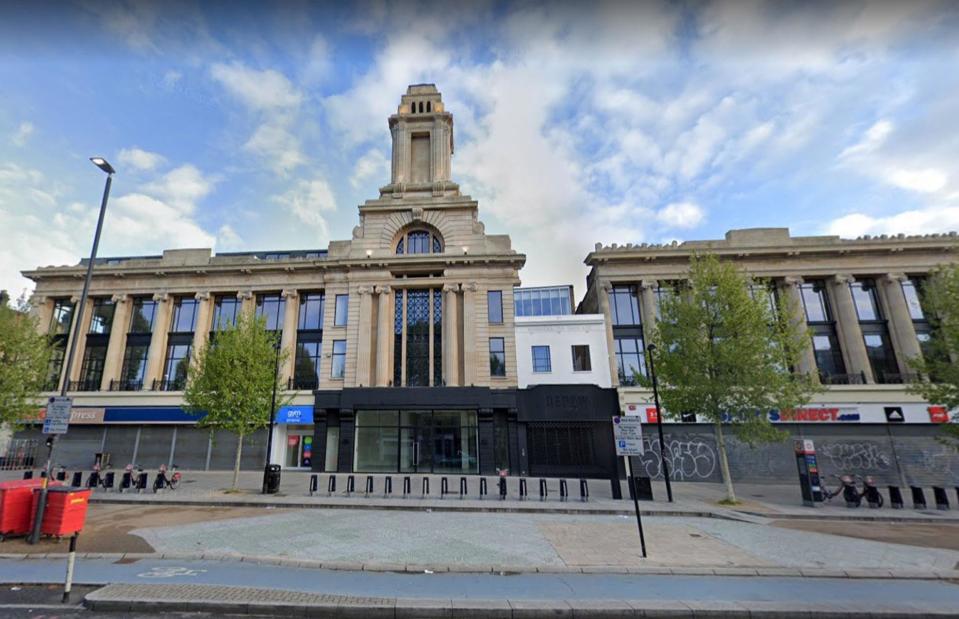
Google Maps
Though no doubt exasperated by the Spiegelhalters' stubbornness, the Wickhams completed their department store in 1927, constructing the building around the jewellery shop.
The department store closed down in the 1960s, while the jewellery shop was shuttered for good in 1988. After falling into disrepair, the entire structure was restored recently for posterity.
Saint Joseph Catholic Church vs. Joske’s of Texas

Gau Meo / Shutterstock
Funded by members of the local German Catholic community, the Gothic Revival Saint Joseph Church in San Antonio was completed in 1871.
A soaring steeple was added in 1898 and exquisite stained-glass windows were installed in 1902 at great cost. By this time, the building had become a major landmark in the Texan city.
Saint Joseph Catholic Church vs. Joske’s of Texas
![<p>Michael Barera / Wikimedia Commons [CC BY-SA 4.0]</p>](https://s.yimg.com/ny/api/res/1.2/jABRWBFhYd_nIr9dsdFi7g--/YXBwaWQ9aGlnaGxhbmRlcjt3PTk2MDtoPTYxOQ--/https://media.zenfs.com/en/loveproperty_uk_165/1639f6f79108fa91fe3c8507f82ea8e3)
Michael Barera / Wikimedia Commons [CC BY-SA 4.0]
Despite its landmark status, the endangered church could have met the wrecking ball. In 1945 the Joske's of Texas department store approached the diocese and offered to purchase the building so it could knock it down and build a sprawling retail space in its place.
Parishioners, who were horrified by the proposal, voted unanimously to reject the offer.
Saint Joseph Catholic Church vs. Joske’s of Texas
![<p>Clipper471 / Wikimedia Commons [Public domain]</p>](https://s.yimg.com/ny/api/res/1.2/EIJvgerg6Tu5ATos9rf6Bw--/YXBwaWQ9aGlnaGxhbmRlcjt3PTk2MDtoPTYxOQ--/https://media.zenfs.com/en/loveproperty_uk_165/a9863dcc90cb9faf1c0cfb56f403e4b3)
Clipper471 / Wikimedia Commons [Public domain]
Joske's went ahead anyway and constructed the department store (which was converted some time ago into the Shops at Rivercenter mall) around the beloved place of worship.
The church is now known as 'St Joske's' and also as the 'Jewel in the Heart of San Antonio' despite – or perhaps thanks to – the huge shopping centre that envelops it.


